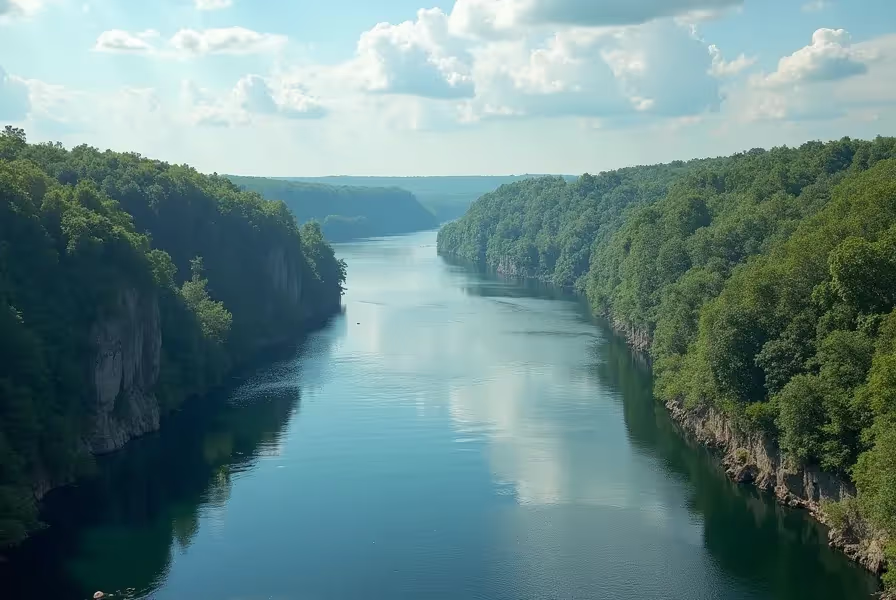Understanding the Size and Importance of the Mississippi River
The Mississippi River is one of the most iconic and vital rivers in the United States. Known for its historical significance and economic value, it plays a central role in America’s landscape and development. When asking, “How long is the Mississippi River?” you're exploring more than just a measurement — you're diving into a story of geography, culture, and natural wonders.
How Long Is the Mississippi River in Miles?
The Mississippi River stretches approximately 2,340 miles from its source at Lake Itasca in Minnesota to its mouth in the Gulf of Mexico. This makes it the second-longest river in the United States, following the Missouri River.
The river winds through a variety of landscapes across 10 U.S. states:
- Minnesota
- Wisconsin
- Iowa
- Illinois
- Missouri
- Kentucky
- Tennessee
- Arkansas
- Mississippi
- Louisiana
Its length may vary slightly depending on seasonal shifts and changes in river channels, but 2,340 miles is the commonly accepted measurement.
Where Does the Mississippi River Begin and End?
The river’s journey starts in Lake Itasca, a small lake in northern Minnesota. From there, it flows southward through the heart of the country. It empties into the Gulf of Mexico just south of New Orleans, Louisiana.
Along the way, the Mississippi serves as a major waterway for transportation, agriculture, and industry. It also acts as a natural divide, often referred to as the line separating the eastern and western United States.
What Are the Major Tributaries of the Mississippi River?
The Mississippi River relies on several major tributaries that feed into it, increasing both its length and volume. Some of these include:
- Missouri River – The longest tributary, it begins in the Rocky Mountains and is longer than the Mississippi itself.
- Ohio River – Joins the Mississippi at Cairo, Illinois, and greatly increases water flow.
- Arkansas River – Originates in Colorado and is a significant water source.
- Red River – Flows from Texas into Louisiana, merging near the Mississippi’s lower basin.
These tributaries play a critical role in determining the river's flow, width, and ecological diversity along various points of its course.
How Deep and Wide Is the Mississippi River?
The size of the Mississippi River varies along its journey:
- Deepest point: Located near Algiers Point in New Orleans, where it reaches about 200 feet deep.
- Widest point: Near Lake Winnibigoshish in Minnesota, it spans over 11 miles across.
- Average depth: Roughly 30 to 50 feet throughout its middle and southern portions.
It’s this variation in depth and width that enables the river to support a wide range of navigation, wildlife habitats, and human activity.
How Does the Mississippi River Shape U.S. Geography?
The Mississippi River Basin is the fourth largest in the world, covering over 1.2 million square miles. This basin drains 41% of the continental U.S., affecting the land, weather, and ecosystem across a massive area.
Here's how the Mississippi River influences U.S. geography:
- Creates fertile floodplains ideal for agriculture
- Carves through limestone, creating bluffs and valleys
- Supports multiple wetlands and delta systems
- Forms part of the Central Flyway for migratory birds
As a geological force, the river has changed course many times over thousands of years. These shifts have altered communities, farms, and natural landscapes alike.
Is the Mississippi River Navigable?
Yes, the Mississippi River has long served as a key transportation route. It carries over 500 million tons of cargo annually, including grain, coal, steel, and petroleum.
There are 29 locks and dams on the Upper Mississippi, which help manage river traffic and keep sections navigable year-round. Barge traffic is especially common between Minneapolis and Baton Rouge.
This navigability supports both domestic commerce and international trade, making the Mississippi a backbone of America's economy.
Frequently Asked Questions About the Mississippi River
How long is the Mississippi River compared to other rivers?
The Mississippi River, at 2,340 miles, is shorter than the Missouri River (2,341 miles) but longer than the Yukon and Rio Grande. Globally, it ranks in the top five longest rivers depending on how it’s measured with its tributaries.
Where does the Mississippi River start and end?
It begins at Lake Itasca in northern Minnesota and ends in the Gulf of Mexico near New Orleans. This journey covers most of the central U.S.
Why is the Mississippi River important?
It provides transportation, irrigation, drinking water, recreation, and habitat. It also supports industries, farming, and tourism for millions of people.
How old is the Mississippi River?
The Mississippi River formed approximately 70 million years ago. Its current path and shape have changed many times due to natural events.
Can you travel the length of the Mississippi River by boat?
Yes, many sections are navigable by commercial barges, private boats, and recreational cruises. However, the northernmost sections are more challenging due to shallow waters and smaller channels.
The Mississippi River’s Lasting Legacy
The Mississippi River is much more than a geographic feature on a map. It’s a living force that has shaped cultures, supported Native American civilizations, enabled westward expansion, and continues to power modern industry.
By understanding its length, geography, and influence, you gain appreciation for this remarkable river’s role in American history and natural science. Whether you're studying hydrology, planning a river trip, or simply curious, the Mississippi’s story is one that flows deep into the story of America itself.











.svg)



